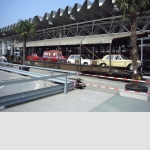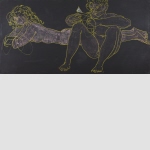Collection Online
Portfolio
-

-
- Sdt 5085 9803 103-9 car transport wagon with protective roof, BLS, 1969
Faster to the south ...
- SWS Schweizerische Wagons- + Aufzügefabrik AG (Schweiz. Wagonsfabrik Schlieren, Schweiz. Waggonsfabrik AG) (1899 - 1985), Manufacturer
BLS Bern-Lötschberg-Simplon Bahn (1907 - 2006), Operator or user
BLS AG (*2006), Operator or user
- Inv. Nr. VHS-11935
- more
-
-

-
- Hans Erni (1909-2015)
Picture panel for the UNESCO exhibition, Zurich 1949
Hans ...
- Erni Hans (Pseudonym François Grèques) (1909 - 2015)
- Inv. Nr. HEM-424
- more
-

